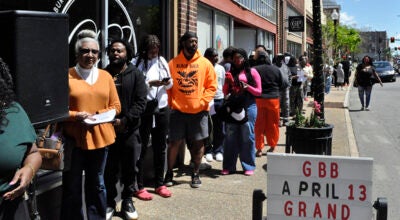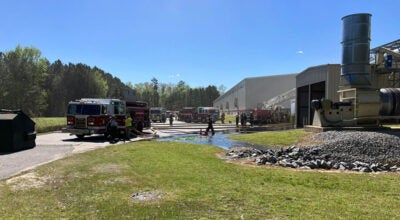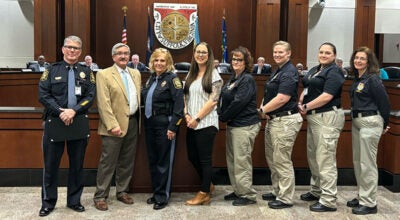Northgate flooding fixed?
Published 10:20 pm Tuesday, July 29, 2014

A tow truck driver prepares to tow a car on a flooded Nansemond Parkway in 2012. City officials and business owners say the road’s flooding issue seems to be fixed because it did not flood during last Thursday’s storm.
Thursday’s thunderstorms inundated some other Suffolk roadways but created no headaches at Northgate Commerce Park — possible proof that the city has fixed a flooding issue there.
“As far as I know, there has been no water on the road since they finally fixed it,” said Joey Daniels, director of Wanchese Fish Company’s Northgate-located Suffolk plant.
“It was perfect.”
In 2012, flooding at the intersection of Nansemond Parkway with the one road in and out of Northgate left employees stranded from workplaces on several occasions.
Businesses reported significant impacts, and Wanchese and Suffolk Cold Storage responded by ferrying workers across the underwater intersection aboard trucks — and imploring the city to do something about it.
Though there were large rainfall variations over short distances, how well the section of roadway handled last week’s deluge, while other parts of Suffolk suffering flooding, could be the best indication yet that the city’s response has worked.
As part of phase one of widening the parkway to four lanes, which Chesapeake will continue on Portsmouth Boulevard — past the line — through to Joliff Road, Suffolk’s contractor installed two large, elliptically-shaped pipes to keep the crucial intersection drained during heavy rain.
The pipes are 91 inches wide by 58 inches tall, according to Eric Nielsen, the city’s director of Public Works, and replace the old 24-inch single pipe that simply couldn’t cope.
As well as what occurs today, the system will handle future additional runoff when the business park further develops, with more hard surfaces and less natural drainage, according to Nielsen.
The city hopes to close out the contract within the next 30 days, said Sherry Earley, manager of the Public Works Department’s engineering division. “It was substantially completed in September last year,” she said. “There are still some minor things being addressed.”
Nielsen says the best indication of the project’s success is that the phone has stopped ringing when it rains. “When that project was under construction, we were getting phone calls from several business, from (Suffolk’s) economic development (department), and others,” he said.
“We were reaching out to them (as well) — when we knew it was going to rain, we were letting them know we were on it.”
During the prior flooding events, the city set up diesel-powered pumps to try to drain the intersection. “Now there’s no need for pumps at all,” Nielsen said.
According to Earley, the intersection has been upgraded to handle one-in-10-year floods. “I don’t think what we experienced Thursday was a 10-year storm event,” she added.
Nielsen says the initial phase of the overall widening project has cost about $18 million, including design, right-of-way acquisition and construction.
The project stretched from the Commonwealth Railway to Helen Street, and a couple of thousand feet along Shoulders Hill Road as well, he said.
The second phase is under design, and in about a year, the construction contract will be bid together with the contract to build Chesapeake’s section, according to Nielsen.
Bidding the contracts together will be more cost-efficient, he said.





